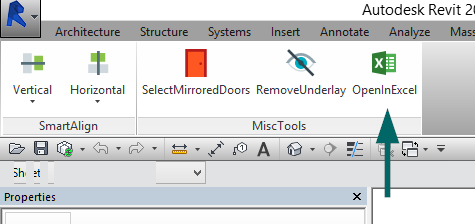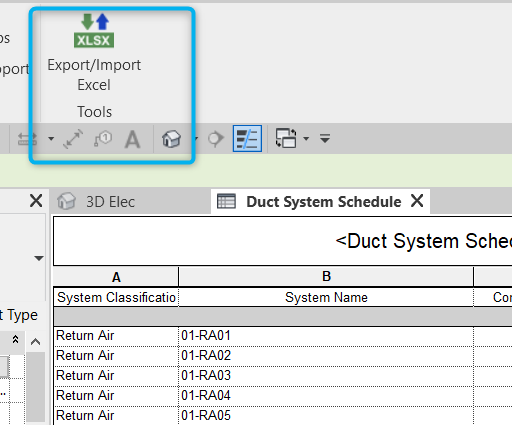Revit Tool Selection for Streamlined Modeling and Style
Wiki Article
Grasping the Art of Information Combination: Just How to Seamlessly Import Excel Data Into Revit
In this short article, we will certainly guide you with the procedure of grasping the art of information combination. Obtain all set to prepare your Excel information effortlessly and follow our step-by-step overview to import data right into Revit. With our ideal techniques, you'll accomplish information assimilation success in no time.Recognizing the Value of Information Integration in Revit
Comprehending the importance of information assimilation in Revit is crucial for seamless importing of Excel files. When you incorporate information from Excel into Revit, it permits you to effectively update and manage information throughout the whole job. This combination makes sure that your style and building and construction process is up-to-date and exact.By integrating data, you can conveniently import and update parameters, routines, and also geometry in Revit. This removes the need for hands-on data entry, conserving you time and decreasing the danger of mistakes. With Revit's information integration capabilities, you can keep uniformity and accuracy in your task, while also improving cooperation amongst employee.

Discovering the Excel File Style for Revit Integration

In order to effectively incorporate Excel data into Revit, it is vital to ensure that the data is formatted properly. This consists of correctly identifying rows and columns, along with structuring the information in a means that is compatible with Revit's data schema. Revit utilizes specific criteria and categories to arrange information, so it is essential to line up the Excel information with these criteria to make sure a seamless assimilation.
Furthermore, it is very important to keep in mind that Revit only sustains particular data kinds when importing from Excel. These include text, numbers, and days. Any other data types, such as formulas or conditional format, will certainly not be recognized by Revit and may create problems during the assimilation process.
Preparing Your Excel Data for Seamless Import Into Revit
To make certain a smooth combination procedure, you'll need to properly style and tag the columns and rows in your Excel data before importing it into Revit. Beginning by analyzing your Excel information and recognizing which rows and columns contain pertinent details for your Revit task.Following, ensure that the data in each column is effectively formatted. As an example, if you have a column for measurements, make certain that all dimensions are constantly formatted in the very same devices of measurement. Revit depends on consistent format to properly interpret and import information.
In addition, it is necessary to check for any kind of vacant cells or incongruities in your information. Revit might not have the ability to check out or import information from cells that are vacant or consist of errors. It is advised to review your Excel data and clean up any type of variances before importing it into Revit.
Step-By-Step Guide to Importing Excel Data Into Revit
As soon as you've correctly formatted and labeled your Excel data, you can conveniently import it into Revit by following this step-by-step guide. To begin, open Revit and navigate to the "Insert" tab. Click "Import CAD" and choose "Import Excel" from the dropdown food selection. A new window will show up, asking you to situate the Excel file you want to import. Search your computer system and select the Excel documents, then click "Open."Following, a dialog box will certainly appear, allowing you to personalize the import setups. Right here, you can select the worksheet you desire to import, define the series of cells to import, and select the ideal systems for your data. As soon as you have actually made your selections, click "OK" to continue.
Revit will certainly currently present a sneak peek of your Excel information. Take a minute to evaluate the sneak peek and make certain that whatever looks right. If needed, you can make adjustments to the import setups by clicking on the "Settings" switch.
Best Practices for Information Integration Success in Revit
Make certain you follow these ideal practices to make certain successful integration of data in Revit. Most importantly, it is important to organize your information Visit Your URL in Excel before importing it into Revit. This indicates making certain consistent calling conventions, appropriate formatting, and accurate data representation. Next, utilize Revit's integrated devices for data mapping. This will certainly permit you to match the columns in your Excel file with the matching specifications in Revit. Bear in mind the information and systems kinds when mapping the information, as any inconsistencies can result in mistakes in the integration process.An additional important method is to regularly validate and update your information. Furthermore, make use of information validation devices within Revit to identify any mistakes or inconsistencies in the integrated data.
Lastly, it is recommended to develop a clear operations for data assimilation. This consists of defining duties and roles, establishing a communication channel between staff member, and establishing a routine tempo for data updates and testimonials. By adhering to these finest techniques, you can make certain a effective and smooth integration of information in Revit, inevitably improving the efficiency and accuracy of your job.
Verdict
To conclude, grasping the art of data combination is wikipedia reference vital for seamless import of Excel files into Revit. Comprehending the significance of data integration in Revit is the very first step towards successful integration. Discovering the Excel data format for Revit combination assists in comprehending the demands and restrictions. Preparing the Excel data appropriately and complying with a step-by-step guide is vital for a smooth import process. By complying with ideal practices, you can make certain data combination success in Revit and make one of the most out of your task.When importing data from Excel into Revit, it is important to understand the documents format and how it can impact the integration procedure (revit add ins). Revit uses certain criteria and categories to arrange information, so it is essential to straighten the Excel data with these criteria to ensure a seamless assimilation
Be conscious of the devices and data types when mapping the information, as any type of disparities can lead to mistakes in the integration procedure.
Additionally, make use of information validation tools within Revit to determine any errors or disparities in the incorporated data.

Report this wiki page